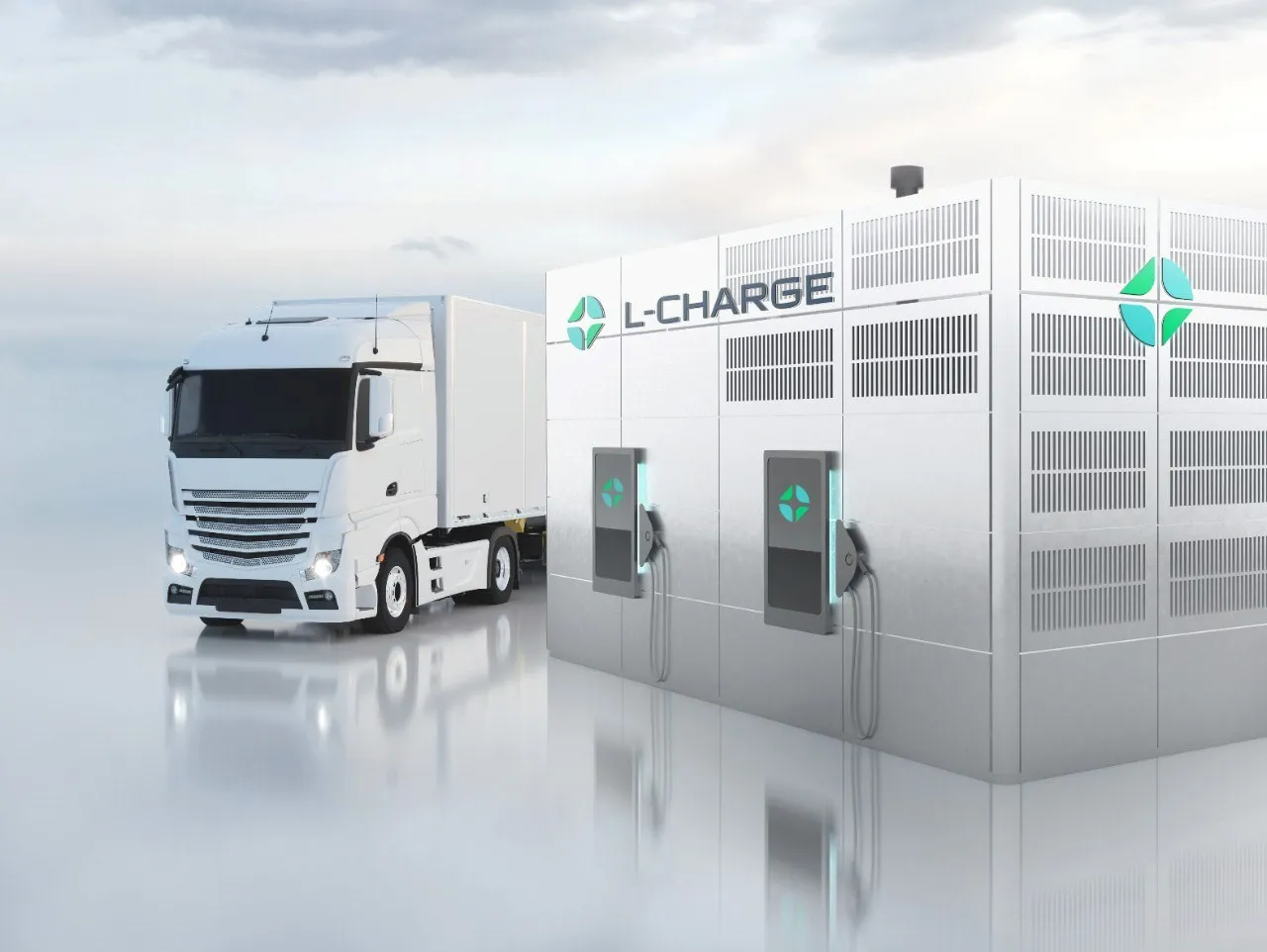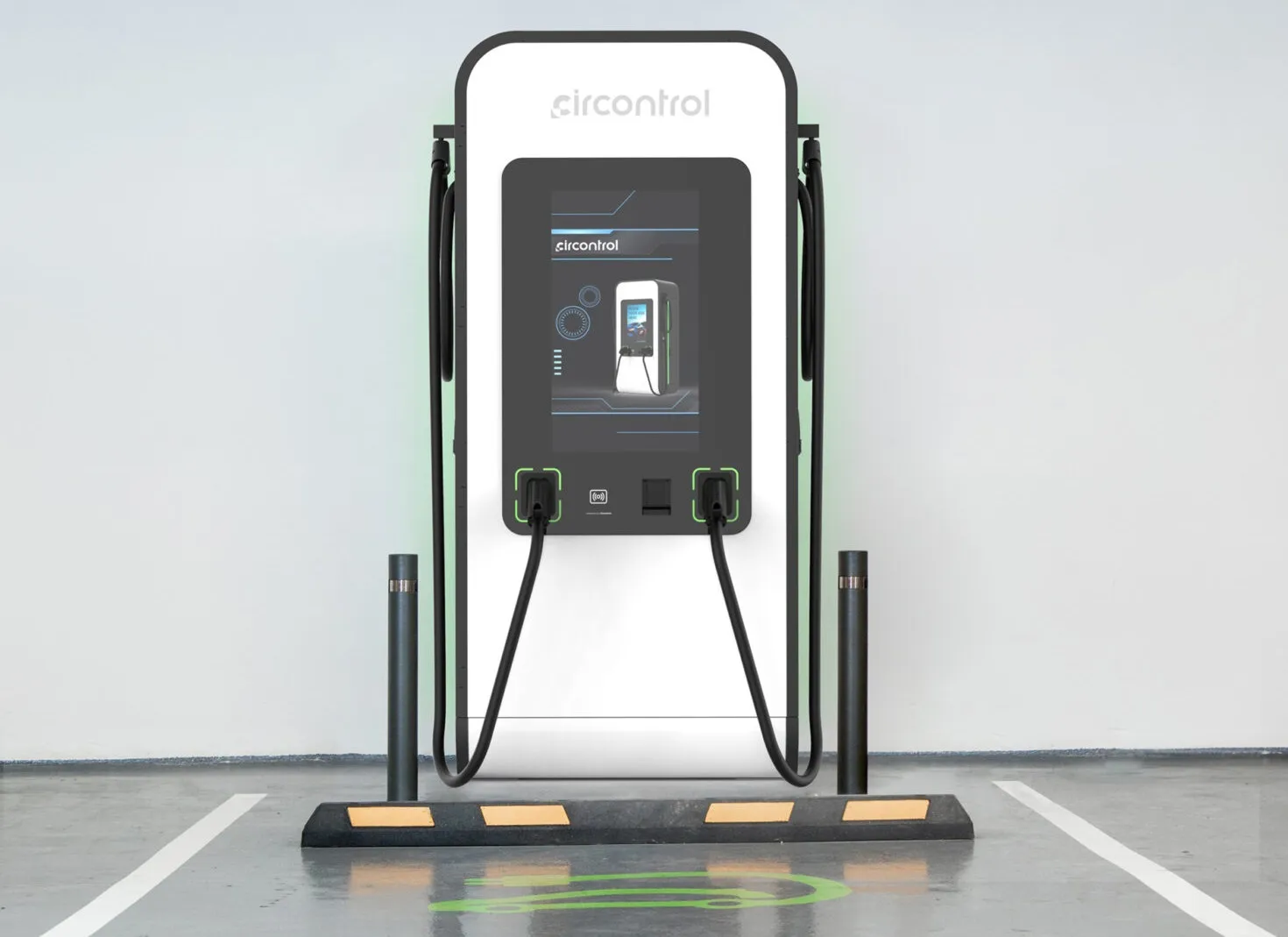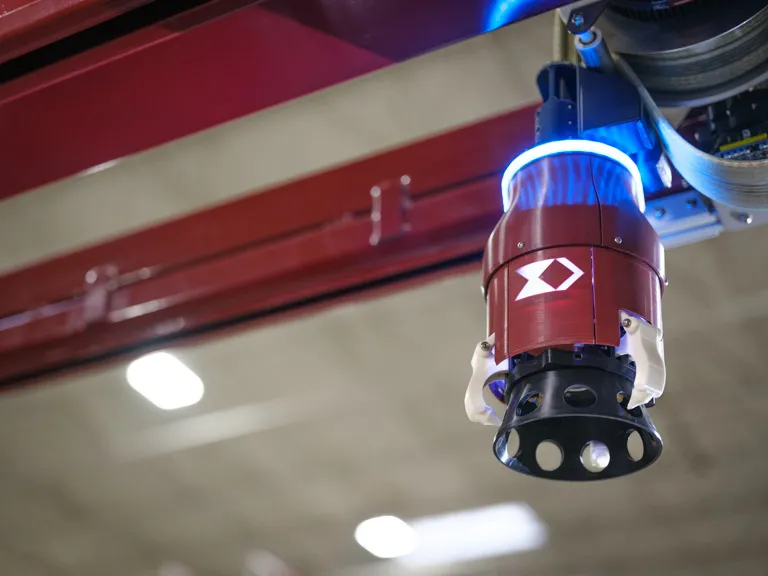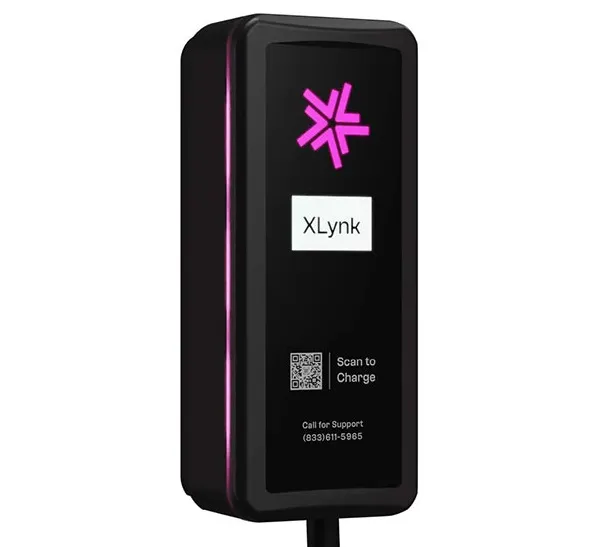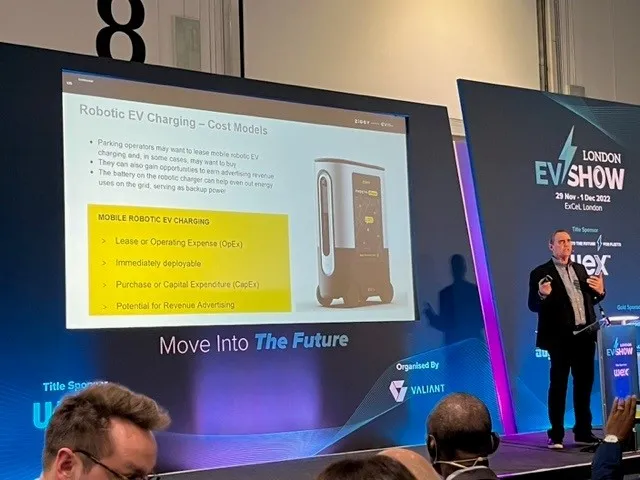
One of the barriers to mass EV adoption is an EV driver’s “charging anxiety”. Can the person be guaranteed that he or she will find a charger when needed or when parked up at their destination?
This is where mobile charging, in particular robotic mobile charging, can pay dividends for EV users as well as building owners, according to Caradoc Ehrenhalt, founder and chief executive of EV Safe Charge and the inventor of Ziggy, a mobile charger.
Mobile charging will be increasing seen as a solution to the anxiety barrier, he said during a conference presentation on day two of the EV Show at London’s Excel Centre. His company works with Jaguar, Audi and Daimler in providing mobile charging units in the US and Canada.
“Basically, businesses need more charging options,” he said. Infrastructure can’t keep up with current pace of EV user increases. “The time is right for mobile robotic EV charging to be part of the charging mix.”
The company’s Ziggy is a charger on wheels that will trundle around a parking lot and meet an EV driver at a designated parking bay. It will block the space until the driver arrives, when it moves out of the way and allows the driver to park. It then moves behind the vehicle and the driver can easily recharge. After completion, Ziggy moves on to either recharge itself at its own recharge station or await another EV charger.
Communication between Ziggy and the EV driver is via a mobile phone app.
“For many older buildings, the structure’s design will not allow the installation of stationary chargers. One of the great things about robotic charging is that you can charge the unit off-site and delivery fresh charges to the site in cases where there may not be any electricity available.”
This scenario is played out for office buildings, sports stadiums, large commercial complexes and airports.
One major international airport has 8,000 parking spots, 12 levels of parking and no infrastructure for fixed charging. So, mobile charging was the answer. “There is one home base off-site that can charge several dozen robots.”
Ehrenhalt predicts that apart from ownership of robotic charging systems, there will be a move to robotic charging as a service where the client is charged a monthly fee. “Of course, there is the potential to add advertising [on a robot unit] which is an amazing cost offset, a revenue generator.”
However, one thing that might be holding back greater use of mobile chargers, at least in North America, is local or state government regulations that stipulate a new building or building complex must have a certain number of fixed charge points in parking areas. At the moment, having a robotic charger moving about does eliminate the regulatory number of fixed charge points. Mobile charging is in addition to this.
However, Ehrenhalt says that robotic manufacturers are “working” on this with local authorities to allow for greater use of mobile charging to satisfy regulations.



